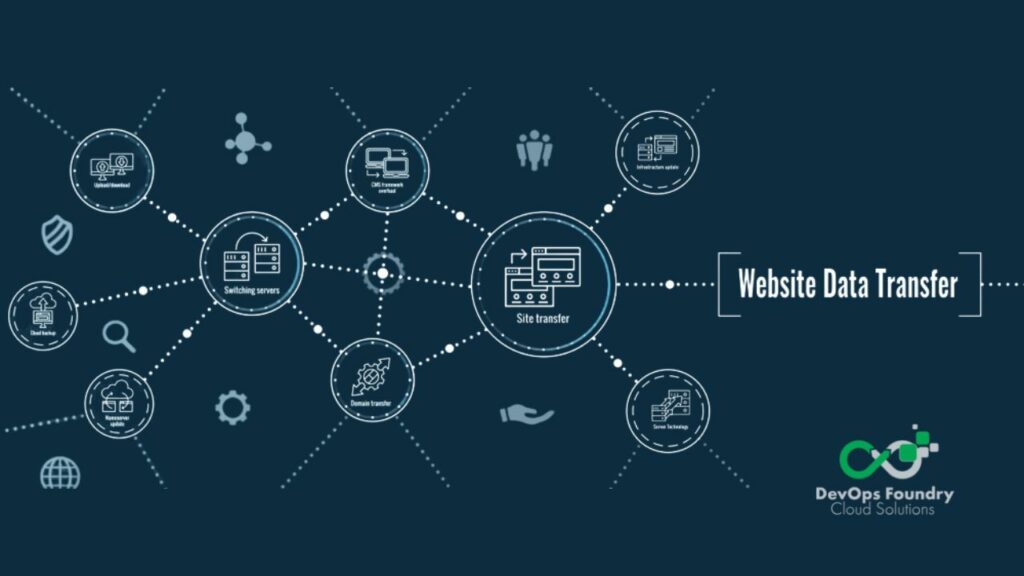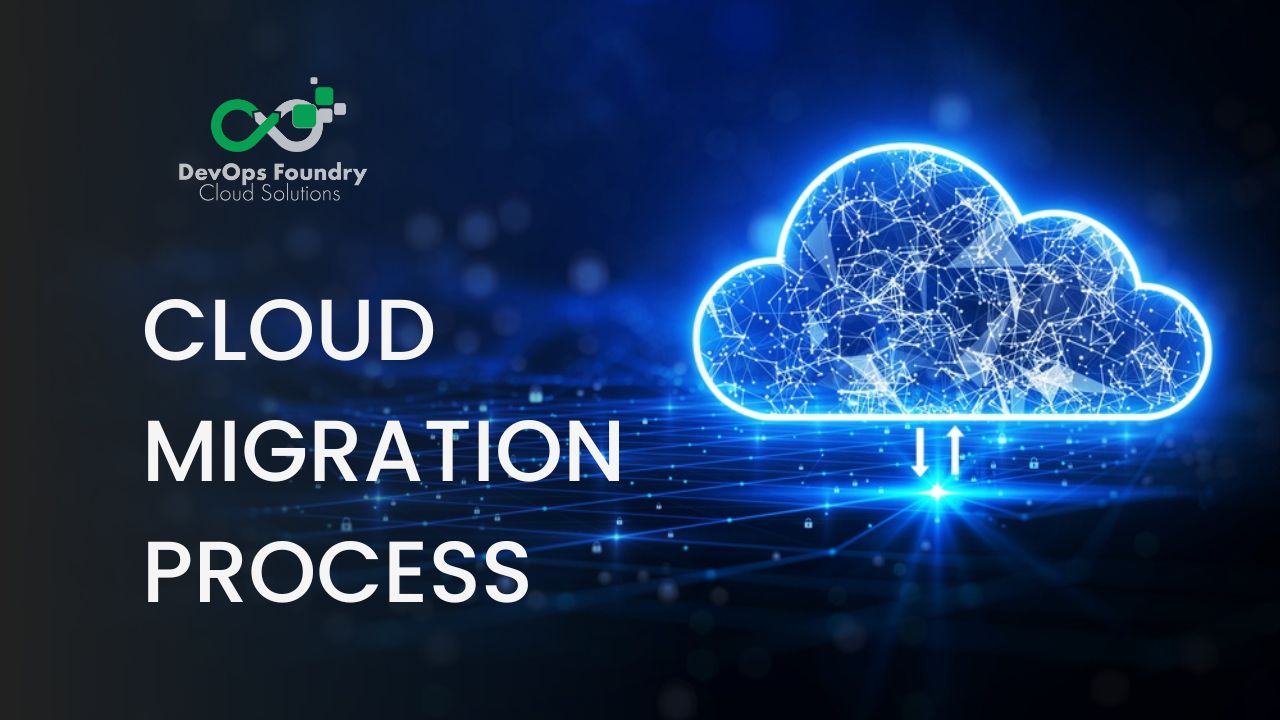Cloud Migration Process: What is Cloud Migration?
what is cloud migration?
Cloud migration is the process of moving data from on-premises servers to hosted cloud platforms. It is sometimes referred to as data center migration because it involves transferring data from your existing data center to a cloud data center, usually to run on the cloud-based infrastructure provided by a cloud service provider such as AWS, Google Cloud, or Azure.
Benefits and challenges of cloud migration
5 Benefits of cloud migration
Better scalability – Cloud computing can scale to support larger workloads and more users, much more easily than on-premises infrastructure. Traditionally, companies had to purchase and set up physical servers, software licenses, storage, and network equipment to scale up business services.
Cost – Companies switching to the cloud can save significantly on IT operations costs, as cloud providers take care of maintenance and upgrades. By allocating more resources to innovation—creating new products or improving existing ones—they can dedicate their resources to innovation.
Performance – Migrating to the cloud can improve performance and end-user experience. Cloud-based applications and websites can easily scale to serve more users or handle higher volumes of traffic and can operate in close geographical locations to reduce network dormancy.
Digital experience – Anyone can access cloud services and data from anywhere, whether they are employees or customers. Digital transformation is enabled by this digital experience, which in turn provides customers with modern, flexible tools.
Server migration can help you with long-term planning, too. You can better prepare for future growth by choosing a scalable cloud provider now.
4 Challenges of cloud migration
Data Protection – Data protection and compliance issues are among the major issues impeding the migration to the cloud. Cloud companies take on the job of safeguarding infrastructure, and clients safeguard data and jobs.
Although cloud providers may offer superior security measures, your organization must set them up properly and ensure that all services and applications have the appropriate security controls. There are serious dangers during the migration process. Migrating large amounts of data that may be sensitive and setting up access controls across different environments creates significant exposure.
Poor strategy – It is a mistake for organizations to rush into cloud migration without a clear strategy. End-to-end cloud migration planning is crucial for successful cloud adoption and implementation. Every application and dataset may require a different strategy for cloud migration, and a business case must be established for each workload migrated to the cloud.
Budget control – Organizations that have migrated to the cloud often lack clear KPIs to understand how much they will save or spend after migration. This makes it difficult to determine whether or not the migration was economically successful. Cloud environments are dynamic and costs can vary dramatically as new products are adopted and user numbers increase.
Vendor lock-in – Cloud technology frequently traps customers. Cloud vendors supply a lot of services, but many of them are limited to their platforms. Migrating workloads to another cloud is a time-consuming and expensive procedure. Many organizations adopt cloud technology, then find it difficult to change providers if the current one does not meet their needs.
Cloud migration is not a quick process. It requires planning, as well as strategy and compatibility with your current systems. If your data is sensitive, migrating it to the cloud can be challenging, too. But with the right strategies, you can protect your data and be confident it will stay secure.
Cloud migration strategies adopted by DevOps
There are five main cloud migration techniques, known as the “5 Rs”.When planning to move to the cloud, we consider which migration strategy best suits your requirements.
The following is a brief description of each:
Rehost – Infrastructure-as-a-service (IaaS) is used in rehosting, or ‘lift and shift’. You redeploy your existing data and applications on a cloud server using IaaS. This is simple to do and is thus suitable for organizations unfamiliar with cloud environments. It is also a good option for situations where it is difficult to alter the code and you wish to migrate your applications since you can do it intact.
Refactor– In this scenario, platform-as-a-service (PaaS) is used. Refactoring, known as ‘lift, tinker, and shift,’ is a method of modifying and optimizing applications for the cloud. There is no alteration to the applications’ core architecture, but adjustments are made to improve the application’s use of cloud-based tools.
Revise– Building on prior strategies, this approach requires significant architectural and coding modifications to migrate systems to the cloud. This allows applications to take advantage of the services provided by the cloud, which frequently requires significant code modifications. This strategy requires advanced planning and foreknowledge.
Rebuild– Building from scratch takes the Revise approach one step further by getting rid of the existing code base and replacing it with a new one. This process takes a lot of time and is only used when firms determine that their current solutions do not meet current business demands.
Replace– Replacing is another solution to the challenges that inform the Rebuild approach. The difference here is that the company doesn’t redevelop its native application from scratch. This involves migrating to a third-party, prebuilt application provided by the vendor. The only thing that you migrate from your existing application is the data, while everything else about the system is new.
our Cloud migration process

Planning your cloud migration
When migrating to the cloud, you must first assess your environment and identify the factors that will control the relocation, such as critical application data, legacy information, and application interoperability.
Furthermore, you must determine if you have data that needs to be reset regularly, if you have data that needs to be cleaned up, or if there are noncritical data that can be transferred throughout the first few migrations. You may use these requirements to establish a solid migration plan, identifying which info must be moved, when it should be transferred, whether any scrubbing is necessary, the nature of destination volumes, and whether data will be encrypted both at rest and while in transit.
Cloud migration business case
In addition to understanding the services and costs of cloud providers, you should understand what alternatives exist and what they cost once you determine your business requirements. Make a case for migrating each application to the cloud showing the anticipated total cost of ownership (TCO) in comparison to the current TCO.
To calculate future cloud costs, you should use cloud cost calculators, taking into account instance types, operating systems, and performance and networking requirements, among other possibilities. Work with cloud providers to reduce costs as you plan for cloud deployment.
There are multiple pricing models available from cloud providers, and long-term commitments to cloud resources (reserved instances) or cloud expenditure (savings plans) provide deep reductions. These reductions must be taken into account when building your business plan to understand the true long-term cost of migrating to the cloud.
Executing your cloud migration
Your migration should be accomplished once you have identified your environment and drawn up a plan. The primary difficulty here is executing your migration with minimal disruption to normal operation, at the least cost, and in the shortest period. If users cannot access your data during a migration, your enterprise operations could be affected.
After the initial migration occurs, you will also be syncing and updating your systems. Each workload entity should be tested in the new environment before migrating to another. Synchronizing changes to the source data is also required as the migration takes place. AWS and Azure both provide built-in tools for AWS cloud migration and Azure data migration.
Upkeep
Optimizing, securing, and retrieving that migrated data from the cloud is critical once it has been migrated. It’s also crucial to monitor for real-time infrastructure changes and anticipate workload contention. In addition to real-time monitoring, you should also assess the data’s security as it sits to ensure that working in your new environment meets regulatory compliance laws. It is also important to meet ongoing performance and availability targets in case your RPO and RTO objectives change.
A step-by-step guide to basic cloud migration.
- Set goals – You can determine whether the migration was successful by setting performance, timeframe, and cost goals. These are the concrete numbers to shoot for: performance, timeframe, and cost objectives.
- Develop a security strategy– A security strategy must be developed. Since cloud security is different from on-premises security, you must consider traffic from and to the cloud, as well as how to leverage “least privilege” access to the cloud.
- Copy existing data– Make sure that you’ve copied current data to the cloud provider throughout the migration, and ensure it’s up to date.
- Refactor or rewrite your Business Intelligence– Consider if you want to do this in stages, and if you do, a custom dashboard can be a helpful tool while larger projects are transitioned to the cloud.
- Your cloud is up and running– your mission is accomplished. The journey, however, has just begun.
Cloud migration process FAQs
Can you store sensitive information in the cloud?
Depending on how sensitive the data is that your application stores and retrieves, you might not be able to maintain it in the cloud. Often, there are compliance requirements that also limit your choices of where and how to store sensitive data such as medical personal identifiable information
Will I ever run out of storage in the cloud?
In theory, no. In reality, the limiting factor is your budget. However, it can become more and more expensive and time-consuming to keep up with on-premises storage, whereas with cloud storage you have scalability plus ways to minimize cost such as calculators and alerts.
Will I have to maintain and update my server software in the cloud?
Oftentimes no. In certain cases, the cloud provider will take care of this automatically. Also, some cloud computing models make lots of administrative tasks such as database backup, software upgrades, and periodic maintenance easier by handling them for you.
Can you deploy any technology in the cloud?
If some of the technology you use is proprietary, you might not be legally able to deploy it to the cloud.
Cloud Migration Tools
When an application moves to the cloud, workload management changes significantly. Enterprises should determine the cost of a cloud configuration before migration to avoid unforeseen expenses. IT professionals must alter their management processes to function as well in the cloud as they do on-site. Cloud migration services, as well as free tiers, are offered by AWS, Microsoft, and Google, amongst other providers.
Here are a few examples;
AWS Cloud migration tools
- AWS Migration Hub – Assess and track your migration across tools.
- AWS Application Delivery System– Gather data on your existing on-premises setup to help estimate the total cost of cloud ownership.
- AWS Application Migration Service – Lift and shift your applications directly to AWS with their most up-to-date tool.
- AWS Database Migration Service– Migrate your databases to AWS with low downtime and simple procedures.
Azure migration tools
- Azure Migrate – Assess and migrate on-premises VMs to Azure.
- Data Migration Assistant- Assists in modernizing databases during migration by finding incompatibilities and suggesting improvements.
- Azure Database Migration Service — Migrates on-premises databases to Azure.
Google Cloud migration tools
- Google Cloud Rapid Assessment and Migration Program(RAMP)– Understand best practices for all aspects of your migration to Google Cloud.
- Application Migration – A comprehensive look at a portfolio of application migration options with Google Cloud.
- Database Migration Service – Simplified migrations for SQL databases.
